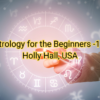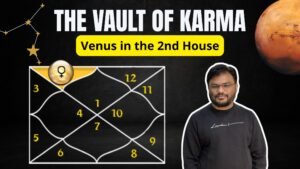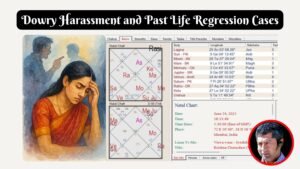The Astrology of Astrologers by Terri McCartney, USA.
Article by Terri McCartney, USA.
Welcome to my first AstroDatabank research post. I intend to post research articles regularly to whet your appetite for research and to keep you abreast of what we’re working on using AstroDatabank’s powerful research capacity built into version 4.
For this first column, I thought it would be fun to advance an AstroSignature for astrologers. Aren’t you just a bit curious to discover what is found in the charts of successful astrologers? We all know what we’ve observed and we have ideas about what we’d expect to find but can we really show some evidence to support our theories and observations?
In this project, I used Astro Databank’s new release 4.0 with its awesome factor analysis feature to develop an Astro Signature for Astrologers. I wanted to test the common assumption that Uranus, Aquarius and/or the 11th house would be thematically linked to the vocational indicators in the charts of astrologers and I wanted to use a control group to validate my findings.
I found many of the statistically significant findings quite intriguing. Here are just a few of the interesting things I found in the charts of the 100 astrologers tested:
• 38% had the Sun in Scorpio, Sagittarius or Capricorn and these placements were found in the astrologers charts twice as often as they were found in the control group.
• Sun, Moon or Mercury was found in a fixed house for 70% of astrologers and Venus, Mars, Jupiter or Saturn were placed in an air house for 71%.
• Sixty-three percent of the astrologers had the ruler of the eleventh house direct.
• None of the astrologers tested had a mutual reception between Sun and Uranus.
• Pluto, Chiron or the North Node was placed in one of the Gauquelin power zones in 66%.
• Uranus was found aspecting the vertex in the control group more often than it was found aspecting the vertex in the astrologers’ horoscopes.
• Nothing was found in 100% of the astrologers’ charts.
The Vedic Astro Signature
Abstract
Astro Databank’s release 4.0 with its factor analysis module was used to develop an AstroSignature for Astrologers from the Vedic perspective. The chart dynamics of an experimental group of 100 professional astrologers (the same group of astrologers used to develop the Western signature) were compared those of a control group of 1000 generated by the AstroDatabank software. Included in the signature are only those factors found in at least 20% of the experimental group and demonstrating a positive difference frequency of 50% or greater when compared to the control group.
Introduction
After developing the signature for astrologers from the Western perspective (https://www.astrodatabank.com/as/ASAstrologyOfAstrologers.htm) using the tropical zodiac, I felt it would be informative to develop a signature from the Vedic perspective using the sidereal zodiac. I was curious if one would work better than the other.
A literature review of Vedic texts was conducted to identify what has been asserted to be found in astrologers’ charts. For the most part however, this might be termed assumption less research. I allowed the factor analysis reports to tell me what was found with significantly greater frequency in the charts of the astrologers as compared to the charts of the control group. It was the astrological factors that showed up in the charts of at least 20% of the astrologers and at frequencies 50% or greater than they were found in the control group that were included in Vedic signature for astrologers presented here.
Following is a list of the factors evaluated for this project using the Astro Databank 4.0 software:
• Moon through Saturn, Ascendant, MC, house rulers and planetary dispositors in signs and houses.
• Moon through Saturn, Ascendant, MC, House rulers and planetary dispositors in their placements by degree.
• Benefics and malefics by house placement and rulership.
• Placements in friendly, neutral or enemy signs.
• The Vedic full and special aspects.1
• Placements in the lunar mansions or nakshatras.2
• Essential and accidental dignities.
Methodology
Results & Discussion
I reviewed Vedic texts to identify some of the yogas asserted to be found in the natal charts of astrologers. In essence, the yogas are analogous to the Astro Signature because both refer to specific chart dynamics that define specific orientations or conditions—such as the inclination to earn a living as an astrologer. Additionally, Juliana Swanson, an astrologer in Massachusetts, was kind enough to email me some unique yogas asserted by Vinay Aditya in his book, Dots of Destiny: Applications of Ashtakavarga4. Vedic astrologers use several different systems to determine planetary and/or house strength because it is a critical consideration in chart delineation. Ashtakavarga is one such system that evaluates strength by using a complex system of assigning points called bindus.
Following is an example of one of the passages Juliana quoted from Aditya’s text (pp. 69-70)
If 0Mercury is 4th or 6th from Saturn, associated with 5 or more bindus and the 2nd house from the lagna (ascendant) is aspected or occupied by Jupiter, the native becomes an eminent astrologer. There may be exceptions, for example, if Mercury is in its exalted sign, it may have less bindus.
The ADB software does not include a system for scoring strengths as one of its features, so I was unable to test this assertion. Nor was I able to test any of the yogas that referred to placements in houses derived other than from the Ascendant (such as stated above: Mercury is 4 or 6 houses from Saturn or in the case of placements referenced from the Moon’s–which are quite common in the Vedic discipline). Additionally, I did not test yogas that referenced the navamsa chart (the ninth harmonic chart).
I was able to evaluate other assertions. For example, Juliana sent me another quote from Vinay Aditya that guided my investigation (just as Uranus and the ruler of the 11th were closely examined while analyzing the tropical data). It is:
In Vedic astrology, Mercury is the planet of astrology, along with Jupiter, due to their rulership of intellectual reasoning, intelligence, speech, computation and knowledge of scriptures.5
Similarly, James Braha asserts that it is common for the greatest Hindu astrologers to have been born with a powerfully disposed Moon (memory) and 2nd house (knowledge).6
Based on the above information, we’d expect Mercury Jupiter, Moon and the 2nd house to be strong. It was difficult to determine the overall strength of the second house. What was evaluated in this study were placements in the 2nd house, the placement of the ruler of the 2nd house and aspects to and from ruler of the 2nd house. The only factor found in at least 20% the charts of the astrologers and more frequently than it was found in the control group was Jupiter or the ruler of the 9th house in the 2nd (21% of the astrologers versus 16% of the control group).
Another common technique used by Vedic astrologers to evaluate planetary strength is called Shad Bala. Like Ashtakavarga it is a complex system that evaluates planetary strength. Shad Bala is based on six criteria: natural strength, motion, position, aspect, direction and time. Evaluation of the positional strength of a planet includes analysis of its dignity by sign. In this study, Moon, Mercury and Jupiter were analyzed for placement in their rulership, exaltation, fall and moolatrikona sign and degree.7 The following table displays the totals derived from this analysis.
None of the 100 astrologer had Mercury or Jupiter at their degree of exaltation (Mercury is exalted at 15 degrees Virgo and Jupiter is exalted at 5 degrees Cancer).

As the table shows, having the Moon in Taurus is found significantly more often in the astrologers charts and this is included in the Vedic signature along with Moon in Aquarius, the only other sign where the Moon demonstrated significance by placement. Mercury did not demonstrate significance by dignity but it did demonstrate significance in sidereal Libra, Scorpio and Capricorn. Jupiter demonstrated no significant difference with its placement by sign. While 12% of the astrologers had Jupiter dignified in Sagittarius as compared to 9.5% of the control group, this was not a large enough difference to establish statistical significance. Therefore, it would be salient to investigate further to determine if Mercury and/or Jupiter demonstrate significance using the Ashtakavarga or Shad Bala systems to determine their strength in both the natal and navamsa charts.
Additionally, to determine the quality of a planet’s influence (whether it is a benefic or malefic influence in the natal chart) involves an evaluation of the house or houses it rules. The rules governing this evaluation must take into consideration that both Jupiter and Mercury are able to rule two houses and one might be a benefic house and the other a malefic house. In general though, any planet ruling the 1st, 5th, or 9th house is considered a beneficial influence in the chart and that can be determined quite simply by rising sign. For example, the Moon rules house 1, 5, or 9 when one of the water signs is rising and would be treated as a benefic in the natal horoscope. Mercury is a benefic for Taurus (rules 5th), Gemini (rules 1st), Virgo (rules 1st), Libra (rules 9th), Capricorn (rules 9th) and Aquarius (rules 5th) Ascendants. Jupiter is beneficial for Aries, Cancer, Leo, Scorpio, Sagittarius and Pisces rising. The table below shows the result of determining whether Moon, Mercury and Jupiter carry a beneficial influence more often in the charts of astrologers than they do in the control group. Since none of the rising signs demonstrated significance on their own, I treated the rising signs in groups for this analysis.
Moon benefic-Cancer, Scorpio or Pisces rising 29% 26%
Mercury benefic-Taurus, Gem, Virgo, Libra, Cap, AQ rising 47% 53%
Jupiter benefic-Aries, Leo, Cancer, Scorpio, Sag or Pisces rising 54% 48%
Note that both Moon and Jupiter are beneficial for individuals with Cancer, Scorpio or Pisces rising and Jupiter is also a benefic for Aries, Leo, and Sagittarius rising and having any one of these six signs rising does occur more frequently in the charts of the astrologers.
Additionally, the review of yogas uncovered a few other assertions I felt were pertinent to the practice of astrology. All of the following were taken from James Braha’s text.8
• The 12th lord in the 3rd house gives enormous intuition. Astrologers 6%–Control 8.4%
• In Hindu mythology Mercury is the son of the Moon. Both planets are mental influences and therefore whenever they aspect each other in any way an extreme intellectual nature is conferred. (This was tested this using the mutual or full aspect (conjunction and opposition with no orb of influence): Astrologers 22% –Control 15.5%
• Mercury in a sign of Mars or Mars in a sign of Mercury is said to be good for intelligence. Astrologers 27%–Control 30% (Additionally, I tested for a mutual reception between Mercury and Mars, and 2% of the astrologers has such while 3.4% of the control group did.)
• If Mars and Saturn aspect each other, the person excels in any technical field. (This was tested using the special aspects Saturn and Mars are able to make and evaluated separately, i.e. Mars in aspect to Saturn and Saturn in aspect to Mars) Mars in aspect to Saturn: Astrologers 30%–Control Group 31.3%. Saturn in aspect to Mars: 23% versus 27.8%
• The lord of the 10th house conjunct with or aspected by Mars gives a career involving …any technical field.9 Astrologers 24%–Control 25.4%
• Venus aspected by Jupiter indicates excellent research ability. Astrologers 38%—Control 33.2%.
The AstroSignature
The Vedic signature for astrologers includes 30 rules and is presented in Table 1. The tropical signature contained 40 rules and therefore the scores on that signature are higher than the scores earned on this Vedic signature. This difference is primarily a result of a reduction in the number of rules referring to aspects because there were many more aspects to consider from the tropical perspective.
The average score earned by the astrologers on the Vedic Astro Signature was 9. The average score achieved by the control group was 5.3. Therefore, the astrologers scored on average 70% higher than did the control group (9-5.3)/5.3 = 69.8%). The astrologer scores ranged from 1-19 and 17% of the astrologers scored 5 or below (the average score for the control group.) The control group scores ranged from 0-15 and only 8% of the control group scored 9 or above (the average score of the astrologers).
AstroSignature Legend:
D=Dispositor; R=ruler; H=House; N=Nakshatra
1) Rule 4 references Sun and ruler of the 9th in Detriment which in Vedic astrology is the same as the sign of their fall in Western astrology. 2) A full aspect signifies that the planets are either in the same sign/house or the opposite sign/house. 3) References to specific aspects (such as the sextile, trine, square, etc) involve full signs—there is no orb of influence. 3) Rule 13 references Sun and Jupiter nakshatras. 4) Rule 14 references Jupiter and Rahu’s (north node) nakshatras, 5) Rules 17 and 18 reference degrees in any sign.

Summary
When we compare the two signatures, the Vedic signature demonstrates a slightly greater difference in average signature score (69.8%) than did the tropical signature (63.6%). However, the tropical signature did a better job of distinguishing the experimental group from the control group. With the tropical signature, only 8% of the control group scored the average astrologer signature score or above (a score of 18+) while 12.2% of the Vedic control group scored the average astrologer signature score or above (a score of 9+). Similarly, 17% of the astrologers scored the average control group score or below using the Vedic signature while only 3% of the astrologers scored below or equal to the average control group score using the tropical signature.
And, as one more tidbit of food for your mind to digest, consider this: some of the astrologers scoring highest on this Vedic signature scored at the lower end of the tropical signature and vice versa. This realization led me to consider if a composite average might be a useful measure for those aspiring astrologers scoring below the average on either of the signatures. That is, the average signature score for both the Vedic and Tropical signatures could be added together and then divided by two to compute a composite average signature score. For example, the average signature score for the tropical signature was 18. Add to that the average score of 9 earned on the Vedic signature and the total is 27. We divide that by two to get an average composite signature score of 13.5 for the astrologers. That is, an individual’s score on both signatures could be added together in this way to derive an individual composite score and if it is 13.5 or above we could deduce that individual resonates strongly with others in the astrological community.
About Author: Terri McCartney is a teaching and consulting astrologer. She served on the NCGR Board as Research Director for two years. Terri organized the 2007 NCGR Research Symposium in Baltimore. She also joined the Astro Databank team as its Research Facilitator in 2004 and held that position for four years. Her web address is www.astroresources.com. Widely respected among international astrologers and very helpful, we have observed her for years and we recommend readers to contact her for lessons on how research is to be conducted. There can be no better teacher than her into the ever confusing area of research astrology.













Leave a reply
You must be logged in to post a comment.